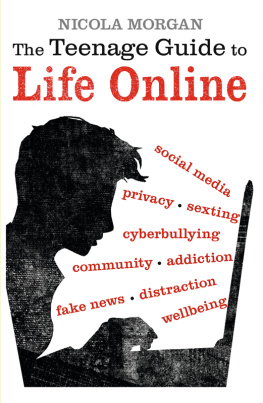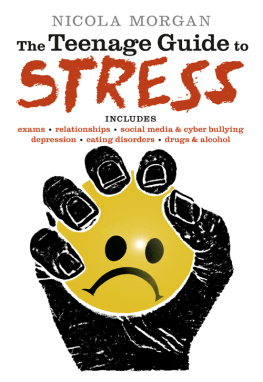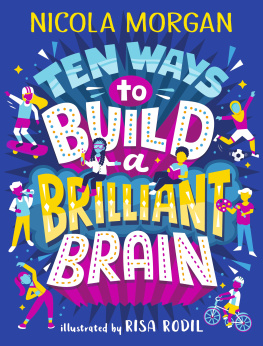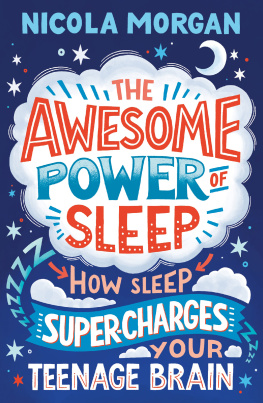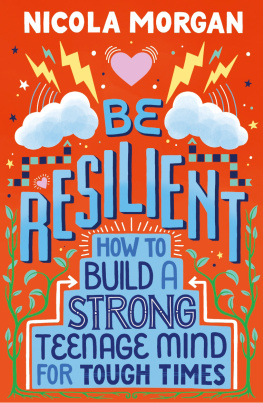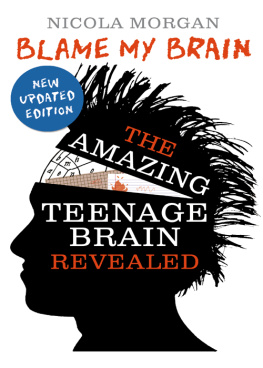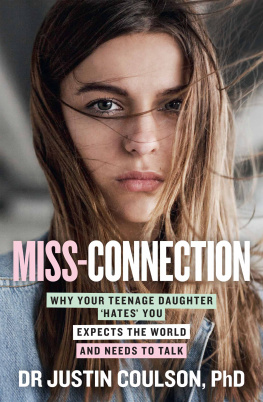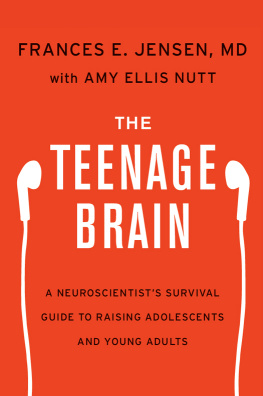

To the many wonderful friends I simply wouldnt have if not for the Internet and social media.
You know who you are.
Introduction
Only a few years ago, the phrase life online wouldnt have made sense. In some places and societies around the world and for certain groups of people everywhere, it still doesnt. But for most of us, life online is just how things are nowadays. You probably take it for granted that you can look anything up really quickly, contact your friends instantly, talk to people on the other side of the world, get news incredibly fast, ask for support, connect to a group of people with the same problem, find out what your homework is, buy things without leaving home, play a game with someone thousands of miles away, watch a video about almost anything you can imagine. The opportunities and advantages are enormous.
The Internet and the World Wide Web (Ill explain the difference later) have vastly changed our lives and how we spend our days and nights. This new online life is changing us, too: changing our brains, but only because everything we do changes our brains, sometimes positively, sometimes negatively, sometimes both or neither. Every choice we make, everything we spend time on and especially things we spend a lot of time on alter our brains and minds. And we are, many of us, spending a lot of time online!
As well as the huge benefits, there are dangers and downsides. Because all this is new, we are only just starting to see what the negatives might be. Many people are worried, and some are very worried. But are we right to be worried and, if so, how worried should we be? Of course, we cant yet know what the long-term effects might be, because we havent been using the Internet for long enough, but were going to need to keep a watchful eye on the science so that we can take steps to live well online and have all the benefits without the possible problems. This book aims to sort through the science and bring you the truth as far as we know it. It also aims to make you think about far more than simple online safety, which you will have learnt at school and home already.
One important point: this is not just about young people. What Im going to show you and share with you is equally true for your parents and teachers. This book may be called a teenage guide, but in fact its for everyone. So I hope you will take the chance to educate your adults as to why they, too, would benefit from being in control of their smartphone and screen use; why switching off their devices an hour or two before bed will help them sleep; why people of all ages are biologically drawn towards social media and checking how many likes their latest post received; that their mental health can also be affected by Internet use; and that their brains are likely to be affected in many of the same ways as yours.
Parents shouldnt fear the Internet but they should be informed. So, inform them!
The Teenage Guide to Life Online reveals the facts, ideas and fascinating science behind what happens to us all when we spend time online. The mind-expanding advantages and the mind-shrinking risks. Because when we understand the risks, the psychological and scientific reasons why we are all vulnerable to them, only then can we avoid the negatives, be strong and remain human in a digital world. This book is about what the Internet does to our lives; how it entices and persuades us; and, crucially, how it distracts us. If we want to work well, be healthy and have the best life possible online and offline we have to know this. And its fascinating, too, because its about us and our behaviours and emotions.
We all need to understand how this wonderful World Wide Web affects us, so that it remains a tool and not a tyrant. This books sets out to explore and compare the positives and the negatives. We can have all the positives and avoid the negatives. We can have control. And we need to, for our own well-being and success.
Welcome to the Internet
A Brief History
The Internet began in the 1960s. But the World Wide Web WWW or often just called the Web was invented in 1989. People tend to talk about the Internet when they really mean the Web, and I sometimes do the same.
But let me clarify the difference anyway.
The Internet is hardware. It is the network of connected computers and devices all around the world. Any gadget you use to connect to websites a computer, tablet or smartphone, for example is part of the Internet when it is connected (including if connected wirelessly).
There is disagreement about how the Internet began, who began it and why. The most common theory is that it was started in 1969 by the US military, who wanted a way to communicate if there was a war or any reason they couldnt send messages by phone. Later, universities started using it to communicate between themselves, too. But the sort of messages and information-sharing that could happen would have looked very different from what we see on our screens today. Much more basic.
The World Wide Web is the content: the information and software which we access and use with our Internet-connected devices. The information has to be coded so that it can be read by different operating systems (OS) and using different browsers or software. In the early days, there were different computer languages, and you could only communicate with other computers that used the same language. In theory, thats still the case, but the two main systems Windows and Apples iOS are sufficiently compatible that you can communicate even if you have a different OS from your friend.
The Web was invented by British computer scientist Sir Tim Berners-Lee, who was responsible for developing HTTP, the language system in which text can be coded in order to be shared between computers. Using this, in 1989 Berners-Lee sent the first successful HTTP communication between a computer and a server. From then on, any computers connected to that server could send and receive data.
How Big Is It?
Its hard to measure the Web, partly because its so huge, partly because a lot of it is invisible and partly because its growing all the time. And websites die, but we cant always be sure they are dead. You know when you click a link and it says page not found? Well, that content might still be there but the link is broken, or it and the site it was on might have been deleted.
Here are some ways in which we can try to measure the Internet or the Web.
HOW MANY PEOPLE USE THE INTERNET?
We can count the number of homes with a connection, but we cant know how many people are connected to the Internet in any one home. After all, two people might share an account, or younger people might not have their own account. There are also people who use public connections in libraries, for example, or who may just access the Internet on their phone, and they will not be included in these figures.
For a fascinating insight into how fast the overall figure is changing, visit the site Internet Live Stats. Youll see the number changing in front of your eyes!
From that site when I looked in 2018: Around 40% of the world population has an internet connection today. In 1995, it was less than 1%. The number of internet users has increased tenfold from 1999 to 2013. The first billion was reached in 2005. The second billion in 2010. The third billion in 2014.
Next page
